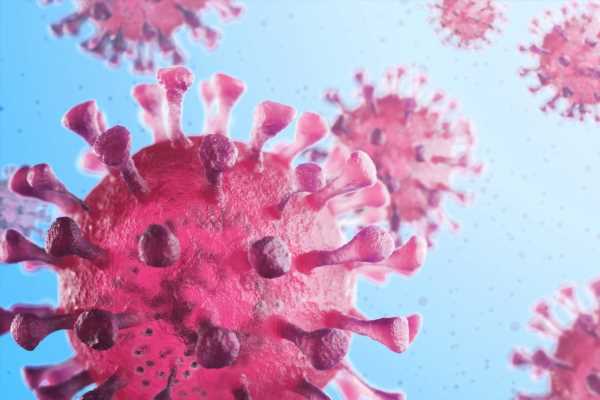In a recent study posted to the Research Square* preprint server, researchers used isothermal amplification with clustered regularly interspaced short palindromic repeats (CRISPR)-Cas12a to detect severe acute respiratory syndrome coronavirus 2 (SARS-CoV-2).

Background
To date, there have been over 546 million confirmed cases of coronavirus disease 2019 (COVID-19), including 6.33 million deaths globally. Quantitative reverse transcription-polymerase chain reaction (RT-PCR) diagnostic tests have been used to combat the pandemic; however, these tests require professional intervention as well as specialized equipment that renders the tests expensive. An alternative diagnostic approach involving loop-mediated isothermal amplification (LAMP) along with a reverse transcription step (RT-LAMP) which is further coupled with CRISPR/Cas, can overcome the issues highlighted by RT-qPCR.
About the study
In the present study, researchers explored a highly sensitive, rapid, point-of-care RT-LAMP coupled with CRISPR/Cas12a assay to detect SARS-CoV-2.
The team aimed to achieve low sensitivity by combining RT-LAMP by simultaneously detecting different target sites present on the SARS-CoV-2 genome using the CRISPR/Cas12 system. The limit of viral detection was increased by investigating additives such as guanidine hydrochloride (GndHCL), which increased the speed of the reaction and the specificity of the primer-target interaction.
Furthermore, the team defined the kit components involved in detecting synthetic ribonucleic acid (RNA) controls using CRISPR/Cas12a and tested the amplification of individual genes. The success of the amplification assay was estimated by assessing the fluorescence of the intercalating dye. The team subsequently translated the detection results with clinical samples to assess the performance of the detection approach.
Results
The study results showed that the detection of SARS-CoV-2 by RT-LAMP revealed that the commercially available detection systems achieved a remarkable response of 30 copies per µL with a high probability of producing false-positive results. The team also observed that these commercial kits were prone to recurrent on and off behavior in response to higher or lower copy numbers. Notably, these kits failed to achieve the sufficient detection limit and specificity desired.
The team also observed that the commercial kits had positive amplification at 10 minutes in the presence of positive controls and high viral loads. Despite this, the sensitivity displayed by these kits was insufficient and did not result in consistent detection of SARS-CoV-2 in samples with lower viral loads. This suggested that the amplification produced low quantities of amplified material, not to a sufficient extent.
The RT-LAMP reaction was supplemented with Bst 2.0 polymerase to improve the speed of the reaction with amplification of 1 copy per µL. The addition of the supplement reduced the beginning of the amplification in the case of samples with higher viral loads and also decreased the limit of detection.
When the team used a less optimized reaction as an additive to Cas12a, the end-point signal was very low with no saturation. The detection of RNA controls using CRISPR/Cas12a resulted in an approximately 10-fold improvement in the end-point signal for multiplex reactions and a two-fold increase in the case of individual reactions. While amplifying an individual gene results in a moderately positive signal in case of high viral loads, combining multiple components made the reaction considerably more robust, with a final signal that was five times higher than that produced in the original reaction. The team noted that this combination of CRISPR/Cas12a-based detection of multiple guide RNAs showed lower or comparable detection limits to commercially available tests.
Analysis of the melting curves of amplified products showed that the denaturation of the double-strand deoxyribonucleic acid (DNA) generated by RT-LAMP increased with increasing temperature. The denatured DNA split into single-strand DNA, leading to a decline in fluorescence intensity. The team estimated the strength of the hydrogen bonds of the SARS-CoV-2-specific viral fragment produced.
Moreover, both the individual genes, namely the Orf1 gene and multiplex, were amplified and had specific melting points without non-specific amplification. Lower copy amounts produced fewer amplicons corresponding to all the genes. In the multiplex approach, the team noted that it was easier to identify lower copy amounts due to the simultaneous amplification of individual genes that produce distinct fluorescence signals. Among the 75 samples translated to understand the performance of the testing method, 25 samples tested positive for SARS-CoV-2, and 50 tested negative.
Conclusion
Overall, the study findings showed that isothermal amplification methods allowed highly sensitive point-of-care testing in a low-resource environment as compared to that displayed by antigen tests. The researchers believe that the testing method can serve as a foundation for developing novel methods for detecting viral infections and other pathogens.
*Important notice
Research Square publishes preliminary scientific reports that are not peer-reviewed and, therefore, should not be regarded as conclusive, guide clinical practice/health-related behavior, or treated as established information.
- Figueiredo, D., Cascalheira, A. and Goncalves, J. (2022) "Rapid, multiplex detection of SARS-CoV-2 using isothermal amplification coupled with CRISPR-Cas12a". Research Square. doi: 10.21203/rs.3.rs-1730849/v1. https://www.researchsquare.com/article/rs-1730849/v1
Posted in: Medical Science News | Medical Research News | Disease/Infection News
Tags: Antigen, Assay, Coronavirus, Coronavirus Disease COVID-19, covid-19, CRISPR, Diagnostic, DNA, Fluorescence, Gene, Genes, Genome, Guanidine, Palindromic Repeats, Pandemic, Polymerase, Polymerase Chain Reaction, Research, Respiratory, Ribonucleic Acid, RNA, SARS, SARS-CoV-2, Severe Acute Respiratory, Severe Acute Respiratory Syndrome, Syndrome, Transcription

Written by
Bhavana Kunkalikar
Bhavana Kunkalikar is a medical writer based in Goa, India. Her academic background is in Pharmaceutical sciences and she holds a Bachelor's degree in Pharmacy. Her educational background allowed her to foster an interest in anatomical and physiological sciences. Her college project work based on ‘The manifestations and causes of sickle cell anemia’ formed the stepping stone to a life-long fascination with human pathophysiology.
Source: Read Full Article
